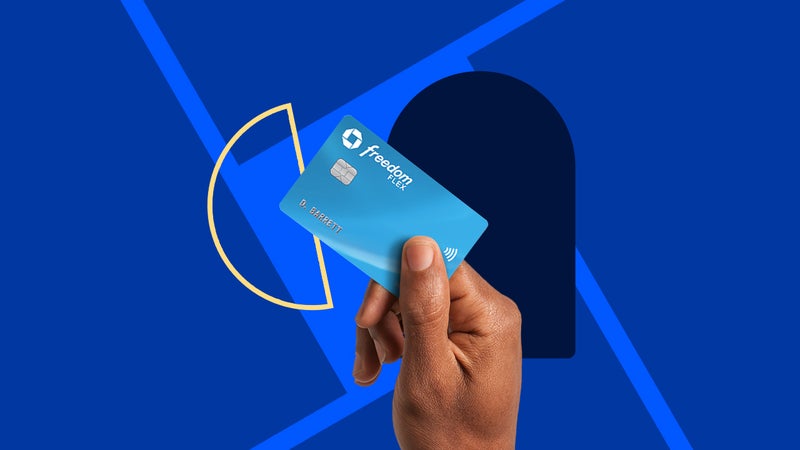Chase Freedom Flex Q2 2024 categories: Potentially up to 9 percent cash back, but more complicated than meets the eye

The Bankrate promise
At Bankrate we strive to help you make smarter financial decisions. While we adhere to strict , this post may contain references to products from our partners. Here's an explanation for . The content on this page is accurate as of the posting date; however, some of the offers mentioned may have expired. Terms apply to the offers listed on this page. Any opinions, analyses, reviews or recommendations expressed in this article are those of the author’s alone, and have not been reviewed, approved or otherwise endorsed by any card issuer.
Next quarter’s rotating bonus categories on the Chase Freedom FlexSM* card look really good — almost too good, to be honest. I wish I could save one or two of them for next quarter (although last year’s Q3 categories were pretty good: gas stations, electric vehicle charging stations and select live entertainment). There are some really compelling, unique options on the list in Q2 2024, including a couple of perks the card has never offered before.
From April 1 through June 30, 2024, the Freedom Flex will give an extra 4 percentage points of cash back at Amazon.com, Whole Foods Market, restaurants and hotels (booked directly or via Chase Travel). Activation is required, and the additional cash back applies on up to $1,500 in quarterly spending. Most purchases beyond the quarterly spending cap only earn 1 percent cash back, although the standard payout for dining is 3 percent and travel booked through Chase Travel gets 5 percent back outside of the promotion.
Usually, the Freedom Flex picks rotating quarterly categories that only earn the baseline 1 percent back, and then that becomes 5 percent back during the promotion. But in Q2 2024, the restaurant component of the promotion will actually be worth 7 percent cash back (4 percentage points more than the card’s standard 3 percent dining reward), and hotel reservations booked through Chase Travel will earn a 9 percent return (4 percentage points more than the card’s standard 5 percent Chase Travel payout).
A few potential pitfalls
It’s worth noting that hotel reservations booked through intermediaries such as Chase Travel don’t typically earn rewards points from the hotel or count toward hotels’ elite status programs. If those considerations are important to you, it’s better to book directly with the hotel and earn 5 percent cash back with the Freedom Flex, instead of the 9 percent back that you’d get by combining the Freedom Flex with a Chase Travel reservation.
The order of your transactions could be important, too. Hotel stays, in particular, can be pricey. Let’s say you already spent a combined total of $1,000 at restaurants, Amazon.com and Whole Foods with your Freedom Flex in Q2, and then you book a $1,500 hotel stay directly with the hotel. Because of the quarterly cap, you would only earn 5 percent back on one-third of that hotel bill. The remaining $1,000 would earn a mere 1 percent back, which is pretty easy to exceed with other cards.
It’s also worth considering if you have other cards that maximize restaurant, Amazon.com, Whole Foods or hotel spending. The Prime Visa, for instance, gives 5 percent back at Amazon.com and Whole Foods throughout the year without a spending cap.
Getting 5 percent back with the Freedom Flex and 5 percent back with the Prime Visa sounds like six of one and half a dozen of the other, but there’s potentially a significant opportunity cost to using the Freedom Flex for that Amazon and Whole Foods spending. If you have the Prime Visa and the Freedom Flex, the $1,500 cap on the Freedom Flex’s 5 percent rewards means you’re sacrificing the opportunity to earn a better return on restaurant or hotel spending if you use the Freedom Flex for Amazon or Whole Foods spending that also could have earned 5 percent back with your Prime Visa.
Similarly, imagine you have a card that gives 3, 4 or 5 percent back on one of these categories. If the Freedom Flex’s quarterly rewards cap is going to come into play, you should use that other card in the relevant category, and save the Freedom Flex for something else. For example, if you can get 5 percent back at restaurants on the Citi Custom CashⓇ Card (up to $500 in spending per monthly billing cycle, if it’s your top eligible spending category), then use your Freedom Flex for Amazon.com, Whole Foods and applicable hotel purchases instead.
My personal Freedom Flex strategy
In my case, Q2 2024 is mostly six of one and half a dozen of another. I do have a card that gives 6 percent cash back on groceries, but since I don’t tend to shop at Whole Foods, that doesn’t conflict with the Freedom Flex’s promotion. And on my other cards, I’d only get 2 percent cash back at Amazon.com, restaurants and on hotel stays. I should use the Freedom Flex for all of those purchases up to the quarterly cap, and the order doesn’t really matter.
Hotel stays are a little tricky, though, because they can represent large amounts that might push you over the spending cap — and also because you might be tempted to prepay for a trip later in the year so that you can earn the additional rewards in Q2. But what if your plans change? I vowed to stop falling for the prepaid discount (often something like 10 percent) after losing several hundred dollars on a prepaid rental car reservation that I missed out on because I wasn’t comfortable traveling early in the COVID-19 pandemic. Three years later, I failed to take my own advice and got lucky when a hotel refunded my supposedly non-refundable reservation (that time, I canceled because I actually had COVID).
While the hotel component of the Freedom Flex’s Q2 bonus menu is potentially lucrative, it has some potential downsides, including:
- The likelihood that a big hotel bill could push you over the quarterly spending cap and cause you to earn a lesser return on a sizable portion of the bill
- The dangers of prepaying for a trip later in the year that you might have to cancel
- The fact that the Chase Travel bookings could sacrifice hotel-specific rewards and elite status perks
I’m not a big hotel fan anyway (when I travel, I tend to prefer Airbnbs), but especially given all of this, I think I’m going to focus on Amazon.com and restaurants with my Freedom Flex this spring.
One other thing — after switching my Amazon funding source from my Wells Fargo Active CashⓇ Card (unlimited 2 percent cash rewards on all purchases) to the Freedom Flex on April 1, I’ll have to remember to switch it back to the Active Cash once I hit the Freedom Flex’s quarterly spending cap. I’m sure Chase would love it if I kept using the Freedom Flex at Amazon beyond the promotion, but I’d only earn 1 percent cash back on those purchases, so it wouldn’t be in my best interest.
The bottom line: Weighing maximum return versus complexity
Credit card rewards can be lucrative, but also complicated. As I sit here noticing that I’ve already typed out more than 1,000 words on how to best utilize the Freedom Flex’s Q2 bonus categories, I know my wife would say it’s too complicated, so why bother? She went grocery shopping over the weekend and used the Freedom Flex for some reason, only earning 1 percent back, when our Blue Cash PreferredⓇ Card from American Express would have paid 6 percent back (up to $6,000 in annual purchases at U.S. supermarkets, then 1 percent after that). Heck, even our super-simple Active Cash (2 percent back on everything) would have been a better choice.
I wrote all of this out on little pieces of paper and took pictures next to each of the cards, but it’s just not a priority for her. And that’s okay, I suppose. These programs do seem to be getting more complicated over time. I like what the Freedom Flex is doing in Q2 2024, but there are more nuances to this new approach than any of the other quarterly bonus promotions they’ve run previously. I think this is part of why choose-your-own adventure competitors such as the Citi Custom Cash and the Venmo Credit Card* have popped up.
And there’s nothing wrong with getting a solid, straightforward 2 percent return on every dollar you spend with a flat-rate cash back card. Ultimately, you need to know yourself. Assess how you spend money, but also how much work you’re willing to put in. Pursuing credit card rewards is a fun game for some, but a confusing chore for others. But since I earned $2,336 in cash back last year, I find it well worth the effort.
Have a question about credit cards? E-mail me at ted.rossman@bankrate.com and I’d be happy to help.
*Issuer-required disclosure statement
Information about the Chase Freedom FlexSM and the Venmo Credit Card has been collected independently by Bankrate. Card details have not been reviewed or approved by the issuer.




